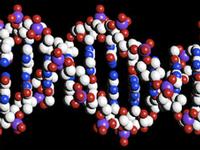After deciphering the human genome, the scientists turn to mapping the active genes in the body's tissues. The research will deepen the understanding of the reasons why a cell becomes cancerous
Yuval Dror, Haaretz, News and Walla!

British and German scientists announced this week the beginning of the "human epigenomic project", whose goal is to map the active and inactive genes in each of the body's tissues. According to the scientists, this project is a complementary project to the human genome project, which ended in early 2003 and deciphered the DNA sequence in the human genome. According to them, mapping the active and inactive genes is the missing link in the connection between genetics and diseases and environmental effects.
In recent years, research institutes have been engaged in mapping and "sequencing" the human genome. The genome consists of about three billion bases, which encode about 30 thousand genes. According to Prof. Haim Sider from the School of Medicine at the Hebrew University, "Every cell in the body contains all the genes that have been passed on to a person by inheritance. For example, the cell in the liver has genes that tell it how to behave. The cell of the retina of the eye also has this gene, but in it it is 'silenced', and not activated."
Each genetic sequence consists of four letters: C, T, A and G. One of the main players in giving the instructions - which genes will be activated and which will be silenced - is a simple chemical group known as methyl.
A study published in the magazine "Molecular and Cellular Biology" found that changes in vitamins given to pregnant mice - which contained methyl - caused the activation or suppression of certain genes. As a result, the fur of the offspring born to the mouse was much darker than that of its mother. "This is an epigenetic act," Cedar explains and interprets the term: "The genetic sequence has not changed - no bases have been added or bases subtracted - there is no mutation here. What happened is that a certain gene works in such a way that the more and more it is exposed, the less its activity. In this case, the gene affected the color of the fur, which was light in the mother and dark in the mouse born to her."
Five years at a cost of tens of millions of dollars
The goal of the project is to draw a map in which the active and inactive genes in every tissue of the body will be shown - so that it will be possible to understand how the cell works. To this end, the scientists will take 200 samples from 200 different tissues in the human body, representing all the tissues in the body, and analyze their "methylation patterns". The scientists will combine the information that will be accumulated during the five years that the project will take place - the cost of which is estimated at several tens of millions of dollars - with the information produced from the human genome project.
According to Cedar, "we do not know precisely which genes are active or inactive in each and every cell in the body, as in the past we did not know what the order of the bases in the human genome was". According to him, "the human genome project was lacking in the sense that it only mapped the four central bases, while sometimes the coiled C appears, which serves as the switch that determines whether a certain gene will be activated or not."
A project may have many implications. Cedar: "Sometimes we examine a cancer cell and find that it has not mutated - that is, there is no change in the genetic sequence - and in fact it is normal. So why is it cancerous? The reason for this, apparently, is that the genes in the cell have undergone an epigenetic change; A gene that was inactive before, suddenly became active and therefore its properties changed and made the cell more aggressive. If we know the mechanisms that regulate the methyl, we will take one big step forward", he said.
